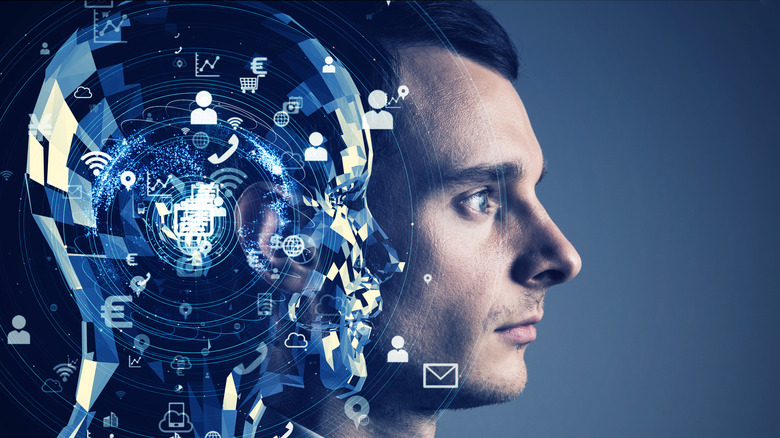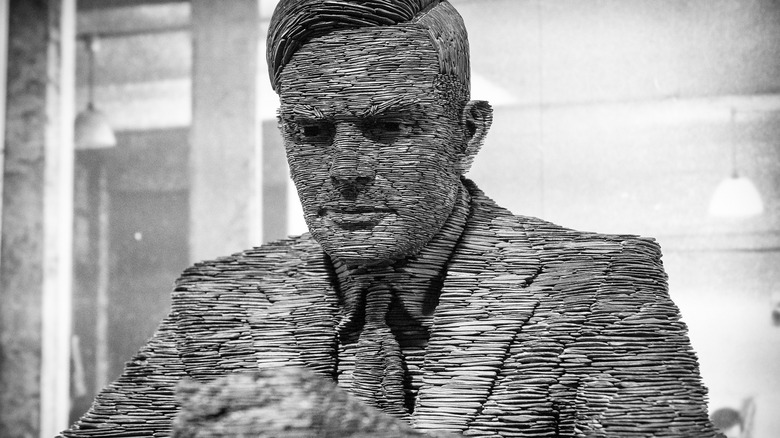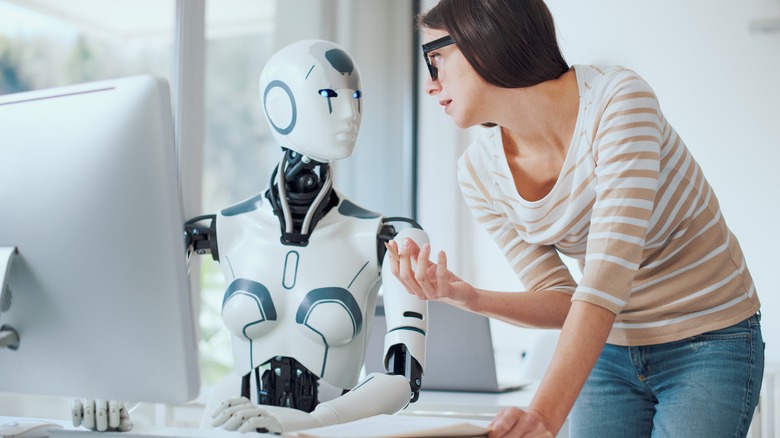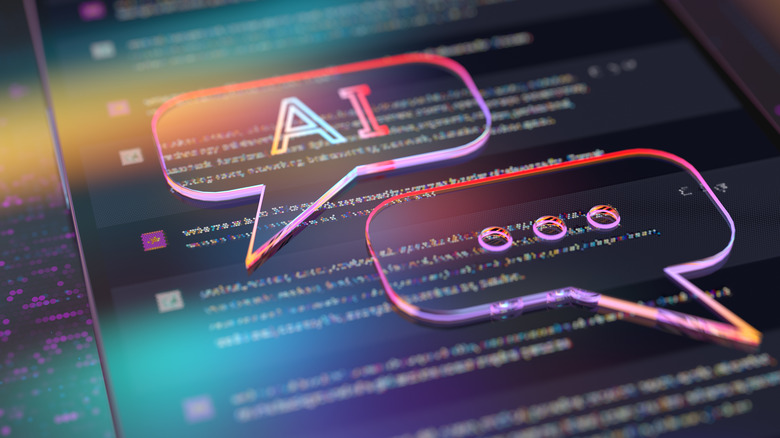The Test Alan Turing Developed To Identify Machine Vs. Human Intelligence
The scene is familiar to fans of 1984's sci-fi classic "Blade Runner:" a questioner sits across from a table and asks a subject a series of questions. The questioner measures and records the subject's responses and biometrics and makes notes. The questions themselves contain jarring, sometimes disturbing content meant to provoke typical human emotional responses. The questioner's goal is simple: to determine whether or not the individual answering the questions is actually a machine.
In "Blade Runner," this test is performed by Harrison Ford's character Rick Deckard in the assessment of a woman named "Rachel," and is called the "Voight-Kampff Test." While the test name is fictionally convincing, it's an adaptation of a real test called the "Turing Test," named after English mathematician and World War II codebreaker Alan Turing. In "Blade Runner," it turns out that Rachel is indeed a replicant, i.e., a synthetic humanoid. It takes Deckard 100 questions to figure it out.
But whether we use the term replicant, robot, machine, or code-only, disembodied artificial intelligence (AI), the test's goal remains the same. We don't need a dimly lit room, a long wooden table, cigarettes blown into the air, or any other fictional elements. Turing's actual 1950 test — dubbed "The Imitation Game" — employed a simple, three-person methodology, as we can read in his original paper on Oxford Academic. Ultimately, Turing just wanted to answer a question that's become increasingly relevant over time: "Can machines think?"
Developed by WWII cryptographer and mathematician
To Alan Turing, he didn't create the "Turing Test." He developed a loose, Q&A-style, informal methodological framework for seeing how well machines, robots, AI, or what have you can imitate human-like responses. Hence the name of the test – "The Imitation Game" — in his 1950 paper, "Computing Machinery and Intelligence." And yes, if the test sounds familiar, Benedict Cumberbatch stared as Turing in a 2014 movie of the same name.
If anyone was in a position to conceptualize such a test and be uniquely qualified to judge issues of machine intelligence, it was Turing. Long before movies like "The Terminator," "Blade Runner," "The Matrix," and many more helped popularize issues of machine vs. human intelligence, and decades before personal home computers became possible, Turing was asking questions that we take for granted. As the BBC outlines, Turing and his team worked with the British military during World War II as a cryptographer trying to decode German messages, particularly those messages drafted using the German "Enigma Machine," which proved difficult to crack.
To those familiar with the logic inherent to complex mathematics and cryptography, Turing's step from mechanized puzzle boxes to "Can this box ever imitate a person?" will seem natural. As The University of Manchester says, Turing became the university's Deputy Director of the Computing Laboratory in 1948 after World War II ended. Considered "eccentric" and nicknamed "The Prof," this is where he devised The Imitation Game, aka the Turing Test.
The Imitation Game
In his 1950 paper "Computing Machinery and Intelligence," Alan Turing outlines how to format and conduct The Imitation Game. Take three individuals — one of whom is the questioner and two of whom answer questions — and place them in three separate rooms. The three communicate via text on a screen (or printout) in order to avoid biases in handwriting and voice. Questions can be artistic like, "Please write me a sonnet on the subject of the Forth Bridge," or technical like, "Add 34957 to 70764." The assumption is that both machines and people will give themselves away through the speed, content, strengths, and faults of the answers, as well as the answerers' reluctances, hesitations, whimsies, charms, follow-up questions, etc. And so, we could say that the test relies on how a respondent answers as much as what the respondent says.
Turing's other conditions illustrate how wildly ahead of his time his thinking was. He mentions an older, "thinking machine" — i.e., computer — postulated way back in 1828 by Professor of Mathematics at Cambridge, Charles Babbage that used mechanical wheels, gears, etc., to perform calculations. Turing says that The Imitation Game requires an electronic computer, particularly one composed of three main parts — memory storage, executive unit, and control unit (just like any 20th or 21st-century computer) — and which produces output based on input conditions. Turing's fundamental question is familiar to modern-day coders and neurologists alike: What is the difference between mere calculations and "thought"?
Criticisms and legacy
It's extremely easy to find fault with Alan Turing's machine vs. human intelligence test, as sites like the Stanford Encyclopedia of Philosophy outline. How could we define an ideally "human" answer, for instance? What about outliers like math savants, poetic geniuses, the extremely socially averse, or the marginally literate (answers were typed, remember)? Even if we screen for those extremes in test subjects, how do we determine whether or not a machine is just really good at faking it, or legitimately "intelligent" and capable of thought? But is such a question relevant to The Imitation Game? Turing never really says so in his 1950 paper, only that the test is designed to suss out machine from human — that's it. And, it's only now with the benefit of historical hindsight and knowledge of modern-day computing, coding, AI, etc., that we're even capable of raising such questions at all.
And yet, in an age where folks are wondering if ChatGPT is going to turn self-aware, Turing's proposed test underpins many of modernity's AI-related concerns. As Tech Target describes, Turing's test has gone through a number of permutations over the years to hone its methods and results. There's the Total Turing Test, for instance, that checks perceptual abilities, and The Marcus Test, where respondents answer questions about a show they've watched. No matter what the variation, Turing put us on the right track to do what we now take for granted: wondering how "human" machines can really get.



